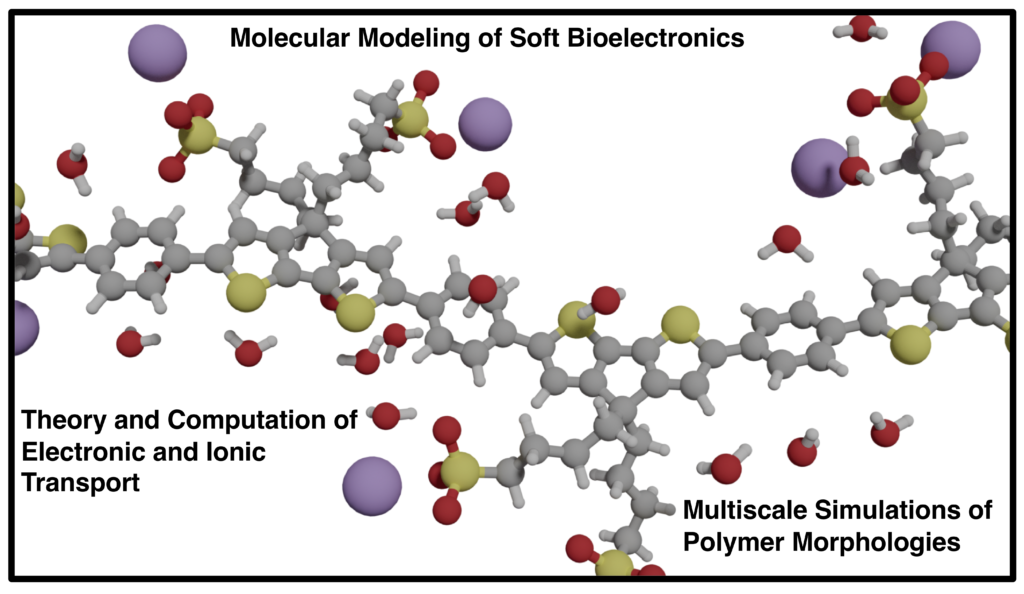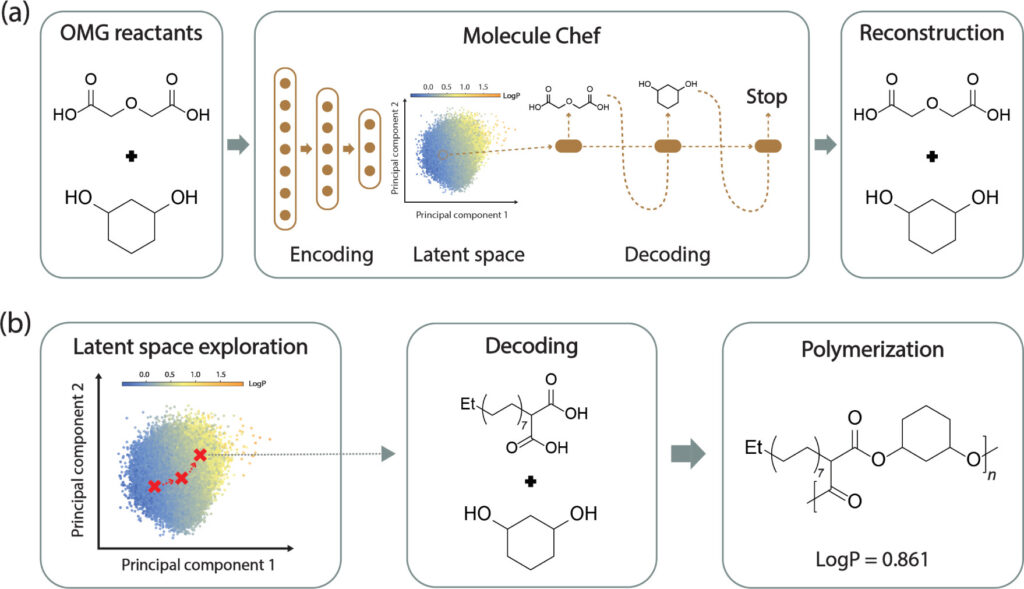The Jackson Lab understands and designs electronic processes in soft materials. We are interested in soft materials that exhibit useful semiconducting, energy storage, energy generation, bioelectronic, or degradable functionality. There is a strong effort devoted to multiscale method developments that enable electronic predictions at the mesoscale.
A good introduction to some of the broad themes and interests of the group can be found in the following perspective article:
Wang, C.-I.; Jackson, N.E.* “Bringing Quantum Mechanics to Coarse-Grained Soft Materials Modeling,” Chem. Mater. 2023, 35, 4, 1470-1486.
Electronic Coarse-Graining

Molecular quantum mechanics has advanced to the point that high-accuracy quantum mechanical observables may be computed for arbitrary chemical structures. However, to fully account for morphological heterogeneity of soft materials (e.g. organic molecules, polymers), one must simulate system sizes on the order of 10-100 nm. This length scale is only accessible via computationally efficient classical simulations using reduced resolution (coarse-grained) models – in these models one cannot solve the Schrodinger equation directly because the atomic degrees of freedom have been averaged into effective coarse-grained particles. Our research goal is to develop efficient and accurate electronic prediction models that do not require the specification of all atomic degrees of freedom. These models will provide access to optical, electronic, and reactive predictions for soft materials at the mesoscopic length scales relevant to real devices of critical use in semiconducting, bioelectronic, and mechanochemistry applications.
Mixed Electron-Ion Conduction in Polymers

Semiconducting molecules and polymers combine the mechanical and thermophysical advantages of soft materials with optoelectronic functionality common to inorganic semiconductors (e.g. Silicon, GaAs). In recent years, the application of these materials classes in biological systems as signal transducers at neural interfaces has emerged. To design materials for these systems requires the challenging multiscale prediction of morphological structure, electronic conductivity, and ionic conductivity. Our research goal is to develop computational models capable of efficiently describing the strong coupling between electronic, ionic, and mesoscopic degrees of freedom in organic materials and to use these models to understand the fundamental tradeoffs between electronic and ionic conductivity in polymeric materials.
AI-Guided Soft Materials Design


A crucial challenge for soft materials design is the strong coupling of disparate length and timescales that mediates materials behavior; molecular degradation is influenced by temperature and humidity; electronic and ionic transport are controlled by mesoscale morphology; biological functionality is inherently hierarchical. This confluence of length and time scales requires the integration of a collection of theoretical, computational, and data-centric techniques to fully characterize material performance. In the past decade, machine-learning (ML) approaches to molecular modeling have transformed the landscape of materials research and engineering. Our research goal is to develop automated and synthetically-aware machine learning models that transform experimental design and closed-loop discovery efforts for soft materials. Specific directions in the group include: (i) generative machine learning models of polymers incorporating synthetic awareness (collaboration with IBM), (ii) closed-loop Bayesian optimization of organic materials (collaboration with Molecule Maker Laboratory Institute), (iii) the design of photoactive polymer resins for 3D printing (collaboration with UT-Austin).
Computational Resources
We benefit from the many computational resources on campus. Primarily, we use our private group cluster, “scruggs”, and the community cluster, lop, run out of the School of Chemical Sciences. If further resources are required, we utilize NCSA clusters Delta and Hal or resources nearby at Argonne National Laboratory.
Funding
We are very thankful for generous support from the following research sponsors.
